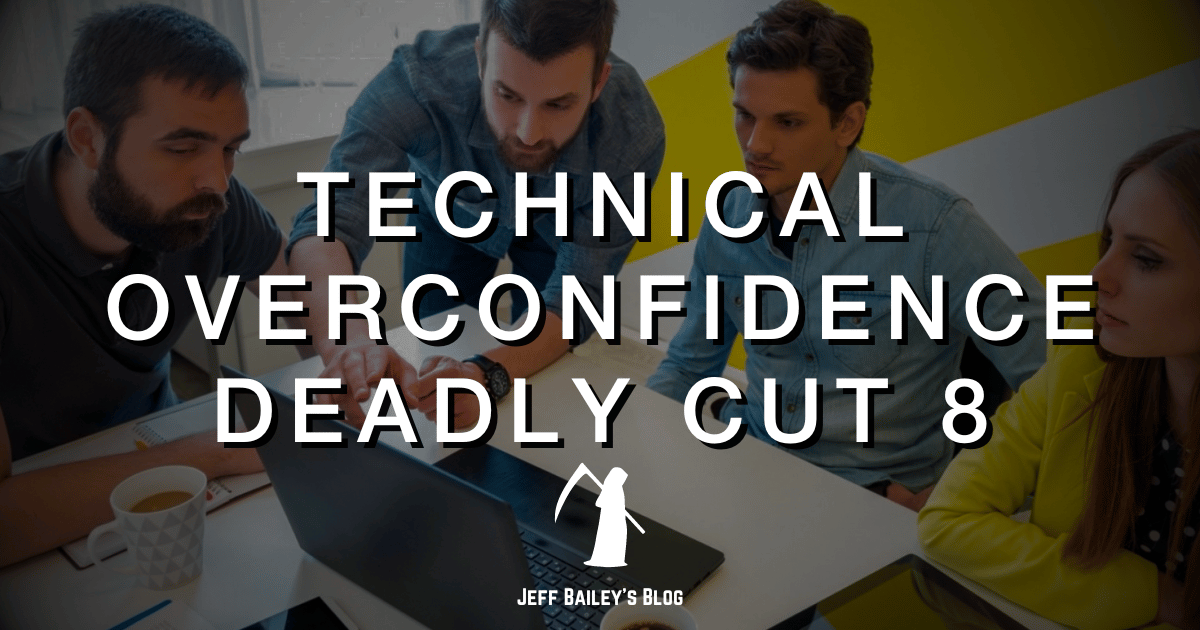Technical overconfidence has become a functional requirement in technical discussions. I used to be quiet, but now I must demonstrate profound confidence to be heard above the noise.
Sound familiar? It should. We’ve all been in meetings where the loudest voice wins, regardless of whether they’re right.
The Problem with Loud Voices
While developing software, my primary goal is to serve user needs. In the past, software development meant living a quiet life with few interruptions. Once upon a time, to avoid dealing with people explicitly, I switched from technical support to software development early in my career.
Oh, how the world has changed, but it’s mostly better now. However, there are still cost overruns in software projects because programmers spend months coding in isolation.
But here’s what frustrates me: when we do collaborate, the loudest voices dominate the conversation. They don’t listen. They don’t consider alternatives. They’re too busy proving their superiority to solve problems.
Let’s return to people. They matter, and that’s why overconfident technical discussions are toxic. When someone bulldozes through a technical discussion with unwavering certainty, they’re not just being annoying; they’re actively harming the product, the team, and people.
When Opinions Become Features
This toxic behavior doesn’t stay contained to meetings. It spills over into the product.
An opinion that creeps into a product feature without contextual market research is a travesty. Loud people don’t make features by design; they make features with bravado masked in professionalism.
I’ve watched this happen too many times. Someone dominates a technical discussion, convinces everyone their approach is superior, and suddenly we’re building features that solve imaginary problems for imaginary users. Meanwhile, real users struggle with basic functionality.
This behavior neither surprises, delights, nor instills happiness except by accident. Professionals with their minds on users get a boot in the face when overconfident know-it-alls enter the chat.
Mr. OverConfidence knows the average air speed of Elixir functions, whether African or European. They’ll argue about micro-optimizations while users can’t figure out how to complete their primary task.
The Exhausting Reality
So what do you do when faced with this behavior? I’ve developed a defense mechanism.
In response to IT professionals who subject me to context blindness, I use measured, clarifying questions. I anticipate quick counter-clarifying questions and prepare myself for them.
“Can you walk me through your reasoning?” I’ll ask. “What alternatives did you consider?” “How does this solve the user’s actual problem?”
This method is exhausting but helps steer conversations away from toxic overconfidence islands. It forces people to slow down and think through their arguments. Sometimes they realize their solution doesn’t actually solve anything. Sometimes they dig in deeper and reveal their insecurity.
Because that’s what this really is: insecurity masquerading as confidence. Insecurity is at the root of this behavior, a symptom of a poisonous culture of overconfidence in IT. To address the root cause, let’s inspect insecurity as a culprit.
The Brogramming Culture
This insecurity doesn’t exist in isolation. Overconfidence leads to a toxic culture of brogramming in IT. A brogrammer feels it’s their duty to inform you about your ignorance and their superior intellect simultaneously.
I’ve worked with these people. They interrupt constantly. They dismiss ideas without consideration. They speak in absolutes about technologies they barely understand. They create an environment where only the loudest, most aggressive voices get heard.
This behavior is a red flag of insecurity flapping in the wind. But here’s the thing: it’s contagious. When one person gets away with this behavior, others start mimicking it. Soon, you have a team where everyone’s trying to out-alpha each other instead of solving problems.
The Healthy Side of Doubt
But here’s the paradox: a touch of insecurity is healthy, while too much insecurity promotes overconfidence. When one believes their solution isn’t good enough, they’ll strive to improve it.
I’ve found that doubt is a wellspring of creativity when balanced with knowledge, empathy, and humility. The best developers I know are the ones who constantly question their assumptions. They’re not paralyzed by doubt, but they’re not blinded by certainty either.
They ask, “What if I’m wrong?” They consider alternatives. They listen to feedback. They iterate based on real user needs, not theoretical perfection.
This is the antidote to technical overconfidence: embracing uncertainty while maintaining competence.
Moving Forward
Lest we forget, computers are only useful tools if we use them to improve human existence. Let’s measure our words, raise doubt, and improve products.
Here’s what we can do right now:
- Ask clarifying questions instead of making assumptions.
- Listen more than we speak in technical discussions.
- Consider alternatives before settling on solutions.
- Focus on user problems rather than technical perfection.
- Embrace uncertainty as a path to better solutions.
As self-aware programmer communities grow, I hope they’ll positively influence IT and transform it into a welcoming environment where the best ideas win, not the loudest voices. 🤞

Comments #